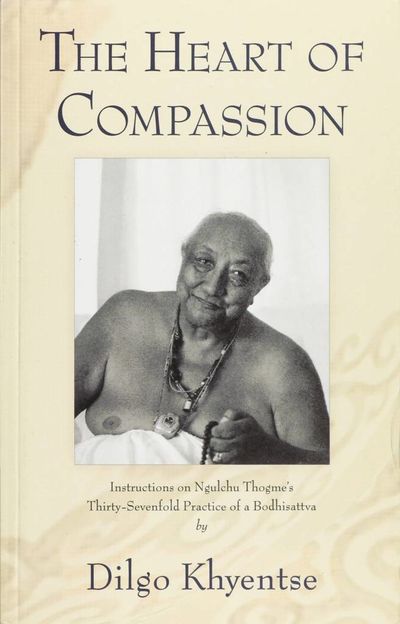No edit summary |
No edit summary |
||
| Line 44: | Line 44: | ||
******** {{i|b. How to use objects of desire on the path|123}} | ******** {{i|b. How to use objects of desire on the path|123}} | ||
***** {{i|II. Absolute bodhicitta|125}} | ***** {{i|II. Absolute bodhicitta|125}} | ||
A. The meditation practice of remaining in a state free of conceptual | ****** {{i|A. The meditation practice of remaining in a state free of conceptual elaborations without any clinging|125}} | ||
elaborations without any clinging 125 | ****** {{i|B. The post-meditation practice of abandoning any belief in the objects of desire and aversion as truly existing|132}} | ||
B. The post-meditation practice of abandoning any belief in the objects | ******* {{i|i. Abandoning any belief in the objects of desire as truly existing|132}} | ||
of desire and aversion as truly existing 132 | ******* {{i|ii. Abandoning any belief in the objects of aversion as truly existing|133}} | ||
i. Abandoning any belief in the objects of desire as truly existing 132 | **** {{i|3. The precepts for training in those practices|136}} | ||
ii. Abandoning any belief in the objects of aversion as truly existing 133 | ***** {{i|I. Training in the Six Transcendent Perfections|136}} | ||
3. The precepts for training in those practices 136 | ****** {{i|A. Transcendent generosity|136}} | ||
I. Training in the Six Transcendent Perfections 136 | ****** {{i|B. Transcendent discipline|139}} | ||
A. Transcendent generosity 136 | ****** {{i|C. Transcendent patience|141}} | ||
B. Transcendent discipline 139 | ****** {{i|D. Transcendent diligence|144}} | ||
C. Transcendent patience 141 | ****** {{i|E. Transcendent concentration|148}} | ||
D. Transcendent diligence 144 | ****** {{i|F. Transcendent wisdom|152}} | ||
E. Transcendent concentration 148 | |||
F. Transcendent wisdom 152 | |||
II. Training in the Four Instructions taught in the Sutra 157 | II. Training in the Four Instructions taught in the Sutra 157 | ||
A. To examine oneselffor one's own defects and to give them up 157 | A. To examine oneselffor one's own defects and to give them up 157 | ||
Revision as of 15:20, 20 February 2020
What would be the practical implications of caring more about others than about yourself? This is the radical theme of this extraordinary set of instructions, a training manual composed in the fourteenth century by the Buddhist hermit Ngulchu Thogme, here explained in detail by one of the great Tibetan Buddhist masters of the twentieth century, Dilgo Khyentse. In the Mahayana tradition, those who have the courage to undertake the profound change of attitude required to develop true compassion are called bodhisattvas. Their great resolve—to consider others’ needs as paramount, and thus to attain enlightenment for the sake of all living creatures—carries them beyond the limits imposed by the illusions of “I” and “mine,” culminating in the direct realization of reality, transcending dualistic notions of self and other. This classic text presents ways that we can work with our own hearts and minds, starting wherever we find ourselves now, to unravel our small-minded preoccupations and discover our own potential for compassion, love, and wisdom. Many generations of Buddhist practitioners have been inspired by these teachings, and the great masters of all traditions have written numerous commentaries. Dilgo Khyentse’s commentary is probably his most extensive recorded teaching on Mahayana practice. (Source: Shambhala Publications)
| Citation | Khyentse, Dilgo. The Heart of Compassion: Instructions on Ngulchu Thogme's Thirty-Sevenfold Practice of a Bodhisattva. Translated by Matthieu Ricard and edited by John Canti (Padmakara Translation Group). New Delhi: Shechen Publications, 2006. |
|---|---|


